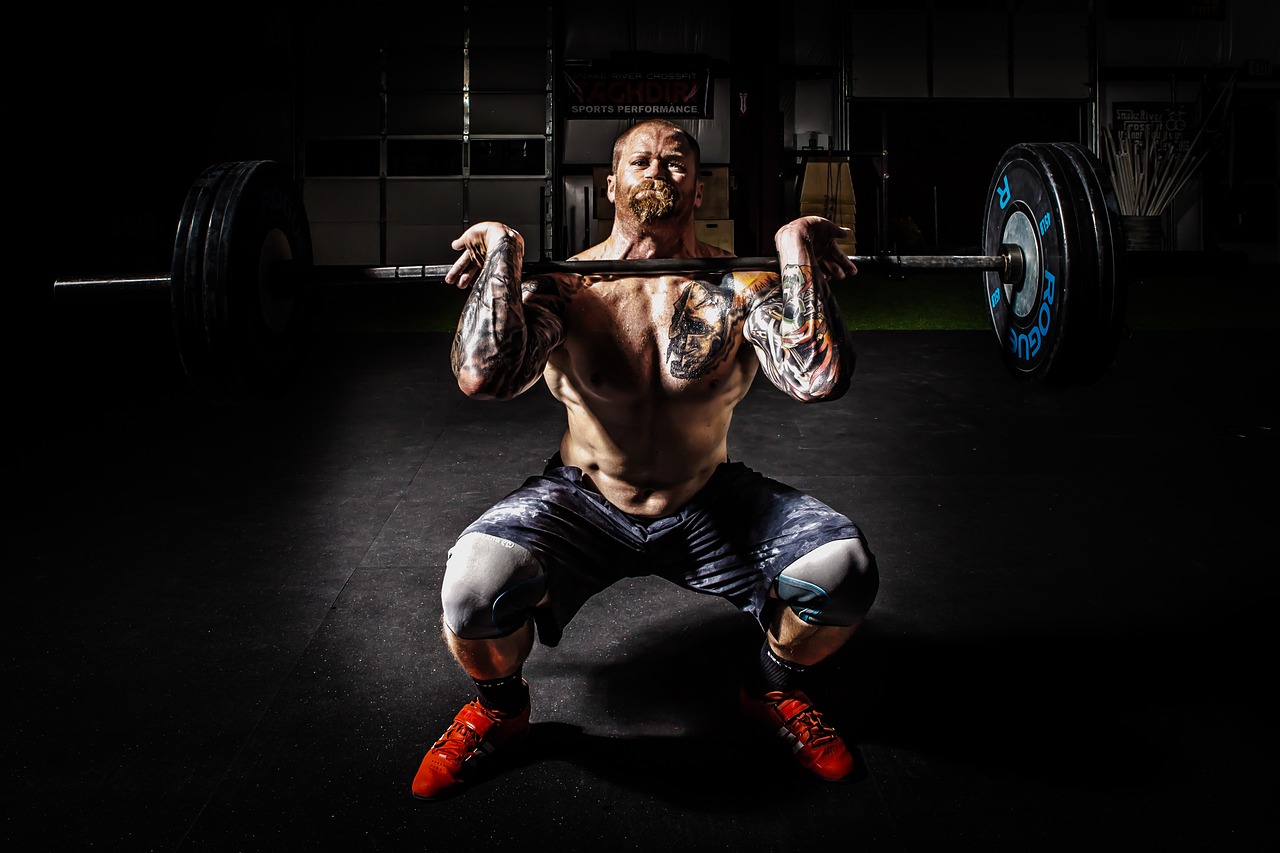The best 4 pelvic floor exercises for women

Women experience problems such as stress incontinence, prolapse, sexual dysfunction, frequency, urge incontinence, and more. All these are attributed to the weakening of the pelvic floor muscles or pelvic floor dysfunction. Fortunately, there are many pelvic floor exercises for women designed to improve muscle tone of your pelvic floor.
Pelvic floor exercises for women in this article include; Squats, Bird dogs, Kegels, Bridges, and split tabletop.
Before we look at these exercises, it is important for you to first understand what the pelvic floor is.
What is a pelvic floor?
The pelvic floor is a set of muscles, ligaments, tissue, and nerves that run from the pubic bone to the tail bone. The pelvic floor muscles and ligaments support the bladder, uterus, and bowel.
The openings from these organs, like the urethra from the bladder, the vagina from the uterus, and the anus from the bowel pass through the pelvic floor.
When the pelvic floor muscles contract, the organs are lifted and the openings to the vagina, anus, and urethra are tightened. When the muscles are relaxed, urine and waste can be released from the body.
According to research, pelvic floor muscles also play a big role in sexual function. Strengthening these muscles can reduce pelvic pain during sex and increase the ability to get pleasurable sensations during intercourse.
For the case of women, pelvic floor muscles go through a lot. The muscles support the baby and assist in the birth process. Natural childbirth and C-section increase the chances of developing urinary incontinence after having babies.
Other factors that cause the weakening of pelvic floor muscles in women include;

- Aging which comes effects such as weak muscles
- Vaginal birth that may overstretch the pelvic floor muscles
- Obesity which puts stress or pressure on to the muscles
- Heavy lifting leading to muscles tears
- Chronic coughing
- Chronic constipation leading to overstretching as you empty your bowel
- Low levels of estrogen after menopause
- Surgeries which involve cutting pelvic floor muscles
How do you know you have a weak pelvic floor?
If you have the following symptom, know for sure that you have weak pelvic flow muscles.
- Incontinence
- Failing to reach the toilet in time
- A distinct bulge at the vaginal opening
- Uncontrollable passing of wind
- Painful sex
- Reduced sensation in the vagina
- The sensation of heaviness in the vagina
- Prolapse – A feeling of something coming down inside the vagina
What are the best pelvic floor exercises for women?
Research shows that pelvic floor exercises help to strengthen or tighten the muscles and ligaments that join the pubic bone to the end of the spine. This can help pelvic floor problems in women such as urinary incontinence, pelvic organ prolapse, and more. The pelvic floor exercises for women include;
1. Kegels
Kegels are the practice of contracting and relaxing your pelvic floor muscles. For those of you who experience urine leakage from sneezing, laughing, jumping, or coughing, Kegels may effectively help this problem. The main target of Kegels is pelvic floor muscles.
How to do Kegels
- With your bladder empty, sit or lie down
- Tighten your pelvic floor muscles, and count 3 to 5 seconds.
- Relax the muscles and count 5 seconds.
- Repeat this 10 times, 3 times a day; morning, afternoon, and night.
2. Bridge
The basic bridge targets the glutes, abs, hamstring, and the pelvic floor. It is easy to do, needs no equipment except the mat and when correctly done, it fully and effectively activates the pelvic floor muscles.
How to do the bridge
- Lie on your back with hands on your sides, knees bent at a 90-degree angle, and feet flat on the floor under your knees.
- Tightening your abs, glutes, and the pelvic floor, push the lower back into the ground before you push up.
- Raise the hips so that your shoulders and the hips form a straight line
- Engage your core, and pull your belly back towards your spine.
- Pause for 20 to 30 seconds and then return to the starting position
- Do about 10 reps.
3. Bird dog

The bird dog is a full-body exercise that involves many muscles at a time. The bird dog targets the abs, the back, hips, glutes, and pelvic floor. You only need space and an exercise mat to carry out this type of exercise.
How to do the bird dog
- Kneel with your hands placed shoulder-width apart on the ground and knees hip-width apart. Keep the back straight and neck in a neutral position.
- Brace your abdominals and lift one hand and the opposite knee two inches from the floor, while balancing the rest of your body on the other hand and the knee.
- When you are steady in this position, point out your arm straight and extend the opposite leg behind. This should form a straight line from the hand to the foot.
- Hold this position for a few seconds and return the knee and hand to the start position
- Switch and repeat the above steps using the other opposite hand and the leg. Aim at doing 5 strong reps on each side. Keep the abs engaged throughout the exercise.
4. Split tabletop
The split tabletop works the abs, the hips, and the pelvic floor muscles. It is an easy to do exercise with only the exercise mat required to set off.
How to do the split tabletop
- Lie flat with your back on the floor
- Lift your legs until they are perpendicular to the floor
- Inhale to engage your abs. In a controlled motion, gently split thighs so that each knee falls outward into a saddle
- Exhale and squeeze the thighs back together while contracting your pelvic floor
- You can do 15 reps and 3 sets.
If you have no exercise mat, visit our article about the best exercise mat and find out what to consider before you pick on any exercise mat, plus our best recommendations.
4. Squats
Squats are among the best strength training exercises. They involve the largest muscles in the body; which include the glutes, hamstrings, quadriceps, pelvic floor, and more. Squats are easy to perform only that you have to make sure you are on form to do this resistance training exercise.
With squats, you don’t need a full store of exercise equipment. You may only need a barbell or dumbbell.
How to do squats
- Stand upright with the feet slightly wider than shoulder-width apart and a barbell resting on your trapezius muscles behind your neck.
- Bend at your knees and hips, sticking your butt out as if you’re sitting into a chair. Keep your chest lifted and spine neutral.
- Squat down so that your thighs are parallel to the ground, keep your head and chest lifted and your weight into your heels.
- Push through your heels and return to the starting position.
- You can begin with 10 reps and add more as you get used to the exercise.
How long does it take for pelvic floor exercises for women to work?
4–6 weeks of regular exercise of pelvic floor muscles is enough to achieve observable changes in the symptoms such as urinary incontinence.
If you’ve been exercising pelvic floor muscles regularly minus improvement in any of the symptoms discussed above, it’s advisable to seek a doctors’ help first before you continue with the various exercise regimens. He/ she may recommend other treatments together with pelvic floor exercises.
What exercise should you avoid if you have the problem of weak pelvic floor muscles?

Some exercises are not good for a person experiencing weak pelvic floor muscles. These may worsen the problem instead of helping. Avoid the exercises below if you have a weak pelvic floor.
- Sit-ups with straight legs in the air
- Lifting heavy weights for minimal repetitions
- Double leg lifts
- High-impact activities like running and jumping
- Stopping urine mid-stream. This is will result in incomplete emptying of the bladder hence increasing the risk of urinary tract infections and other disorders.
Other ways of how to improve the strength of the pelvic floor
1. Eat bladder friendly foods
Reduce the intake of caffeine, chocolate, alcohol, carbonated beverages, and spicy foods. This is because these foods can alter the acidity of your urine, making your incontinence symptoms worse.
2. Stay hydrated and eat enough fiber
Drinking water and having plenty of fiber can improve muscle strength. Lack of enough fluids concentrates the urine and irritating the bladder. Aim at drinking 8 glasses of water a day to stay hydrated.
3. Manage your weight
Weight management will help you to overcome the symptoms of adult incontinence since extra pounds put pressure on the bladder’s muscles causing stress incontinence.
4. Avoid constipation
Straining to empty your stomach when you visit the toilet puts you at risk of weakening pelvic floor muscles. Eat food that allows for smooth digestion.
5. Reduce smoking

Smoking causes chronic coughing that can damage pelvic floor muscles.
Bottom line
Pelvic floor exercises are effective when it comes to strengthening pelvic floor muscles; if they are performed correctly.
To do pelvic floor exercises correctly, feel your pelvic floor muscles as you tighten rather than as you relax them, relax your thighs and buttocks, keep breathing normally, and stop exercising if your muscles fatigue.
If you’ve been exercising pelvic floor muscles regularly minus improvement in any of the symptoms we discussed above, it’s advisable to seek a doctors’ help.
Subscribe for weekly insights on faster weight loss and good health.
[activecampaign form=3]